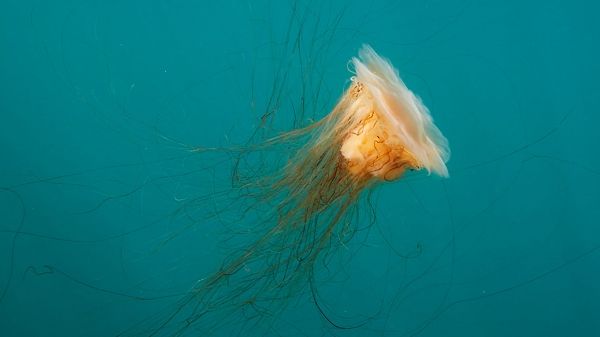Recent accounts in the media have described the appearance of lion’s mane jellyfish in waters and beaches in the Northeast as a surprising, sometimes troubling, event, with record sizes and numbers reported from Maine to the Massachusetts south coast. But is this event noteworthy? Or, as some have implied, is it a sign of failing ocean health? Three WHOI marine biologists weighed in to put events into perspective.
How big are the jellies that have been washing ashore?
Several news stories have described one or more jellies that washed ashore as the largest on record or that the lion’s mane jelly is the largest animal in the ocean. Both of those claims are not entirely true or difficult to corroborate. For one, it’s challenging to accurately measure a jelly out of the water, as gravity will compress and spread the bell, which makes up most of a its mass. A bell measuring four feet across on the beach would appear much smaller if the same animal were floating in the water.
In addition, WHOI Senior Science Advisor and marine biologist Larry Madin noted that references to the lion’s mane jelly as larger than the blue whale are based primarily on an uncorroborated 100-year-old record. Even if it were true, he pointed out, that assessment would include the animal’s tentacles. “Yes, the tentacles are long, but they’re tentacles,” he says. “They’re not the body of the animal. There’s no way they could compare to a blue whale.”
Read more at Woods Hole Oceanographic Institution
Photo: This photo of a lion’s mane jellyfish was taken by professional underwater wildlife photographer Keith Ellenbogen in Stellwagen Bank National Marine Sanctuary, approximately 25 miles off the coast of Boston. As a Visiting Artist at MIT SeaGrant and the recipient of a Hollings Ocean Awareness award, Ellenbogen is working on a multi-year project to raise awareness about the diversity of marine life within the sanctuary and the local waters of New England, including jellies like this. CREDIT: Keith Ellenbogen


